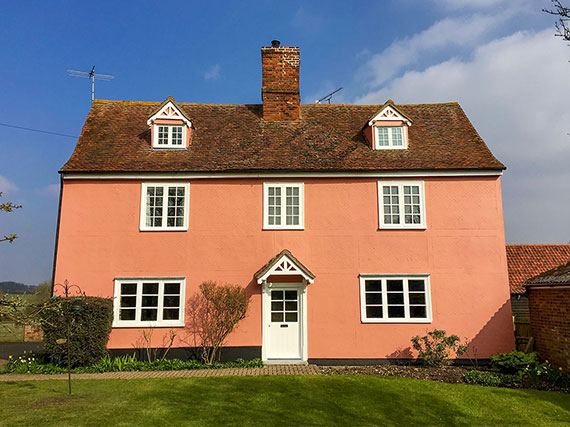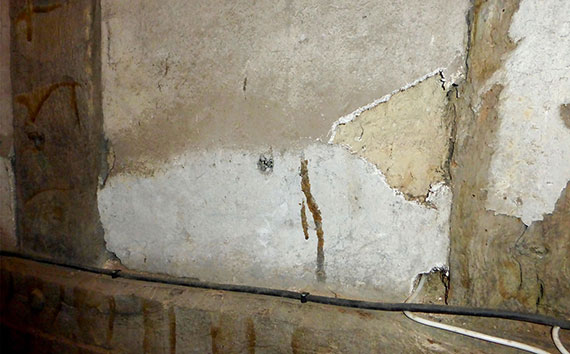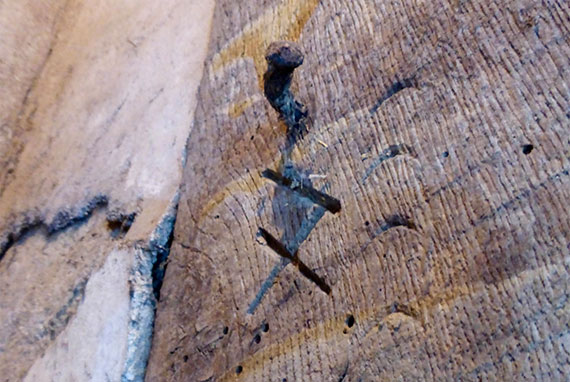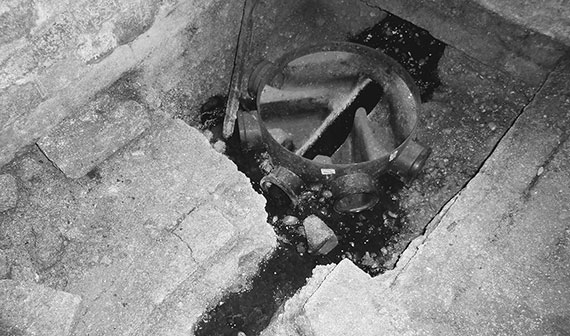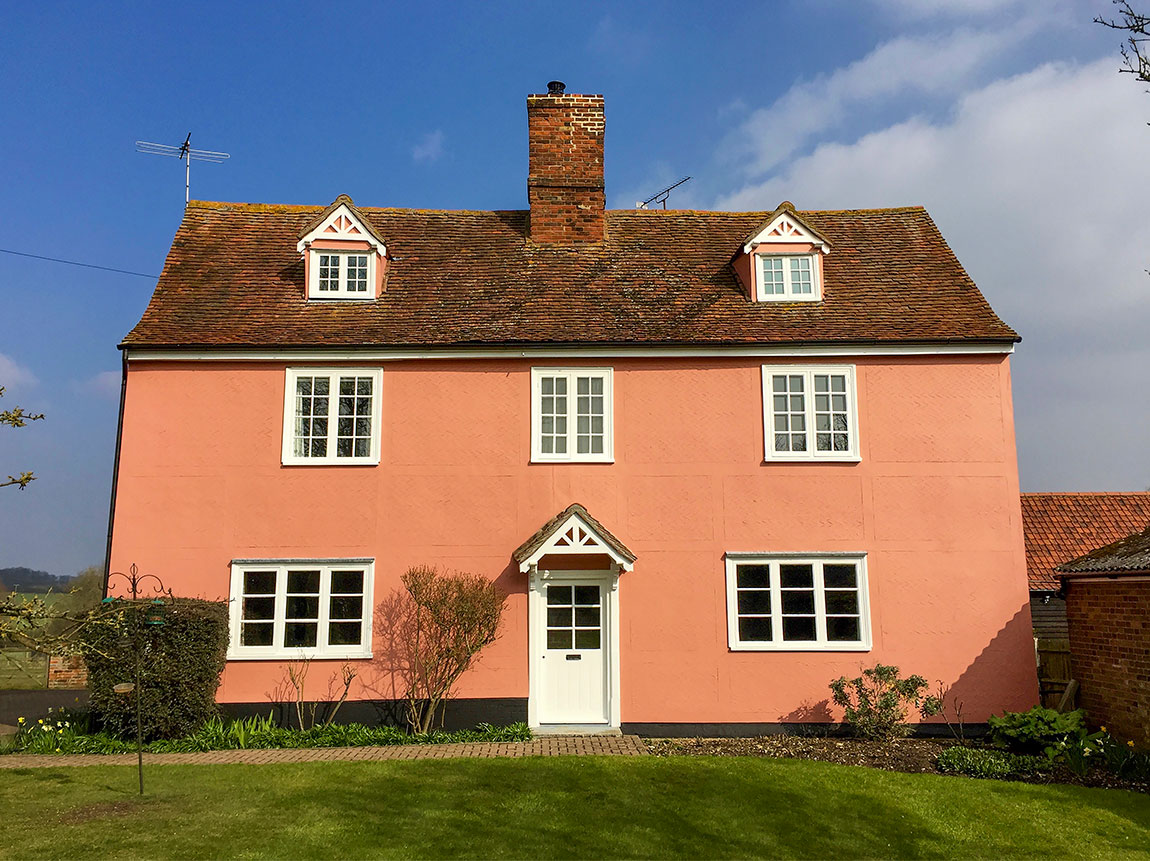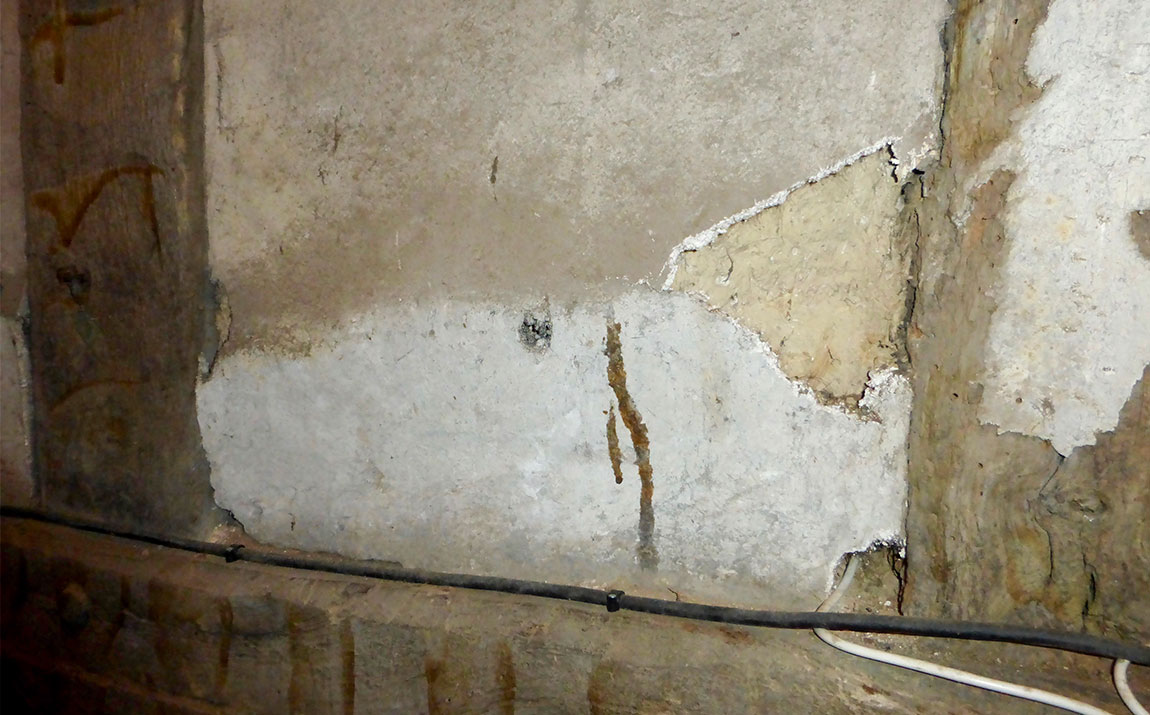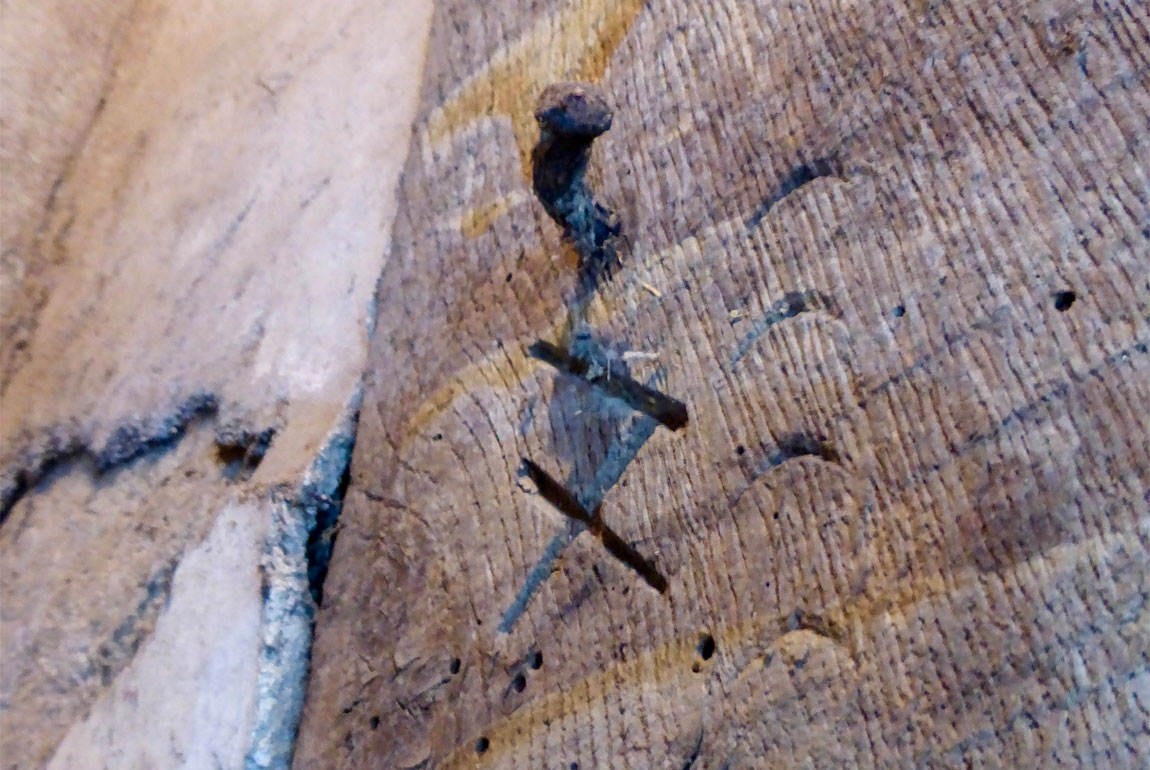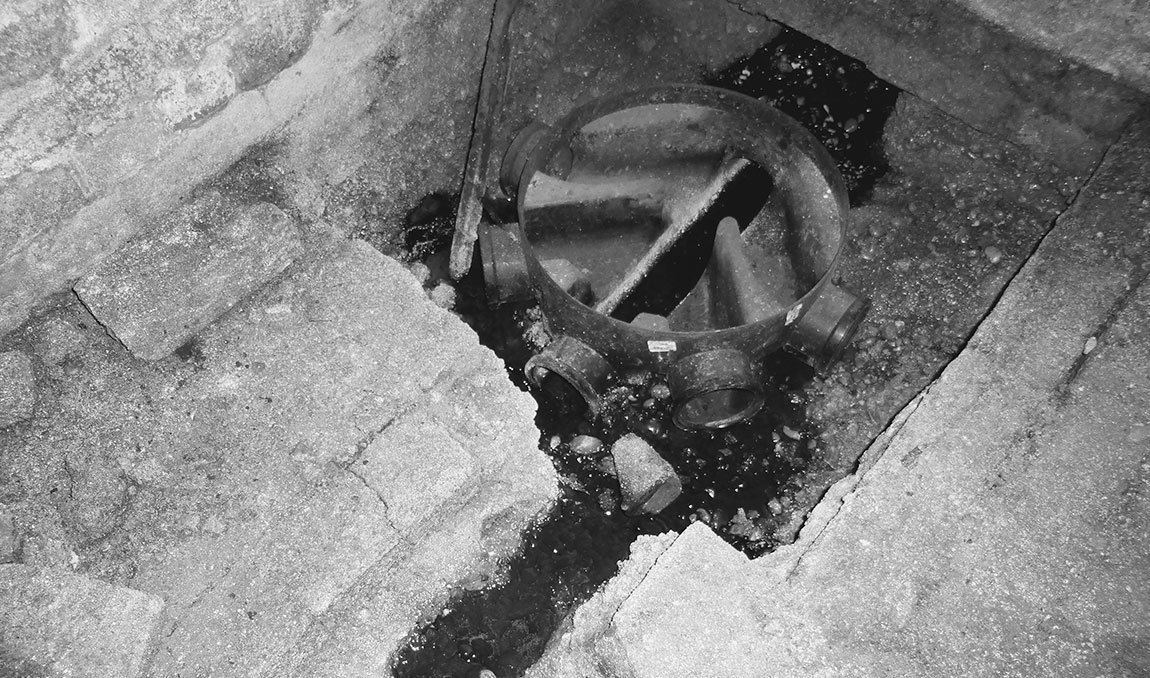A River Runneth
When inspecting a Grade II listed farmhouse in rural Essex, descending the steps into the cellar, I found intact wattle and daub (e.g. infill panels made from made from mud straw applied onto a lattice of branches), covered with haired lime plaster and carpenters marks within the stairwell down to the cellar; fairly typical for a property dating from the 17 Century.
However, on entering the brick paved cellar I found water running freely and continuously from one corner of the cellar.
While the presence of a cellar is fairly typical in properties of this age, I have come across wells within properties previously, I had not seen effectively a water course within a building before.
Channels had been cut into the floor pavers. In the opposite corner (S) of the cellar the pavers have been lifted and an area has been excavated. A modern pre-formed polypropylene, inspection chamber base tray has been positioned in the bottom of the excavation and connected to an out-flow pipe through the rear wall. Water constantly flowed into the drainage tray, both from within the cellar and around the out-flow pipework opening in the wall.
The property owner added the tray and connected it to the surface water drainage, which discharges into the pond at the bottom of the rear garden. This replaced the adjacent sump and sump pump, which was installed by the previous owners. This would suggest that the basement has been “wet” for at least 30 years.
Technically both of these would constitute alterations to the property and should, therefore, have received Listed Building Consent.
As there is no statutory limitation for prosecution for unauthorised alterations to a listed building and I was unsure whether consent had been sought I advised the purchaser to discuss this with their legal advisors.
In terms of the source of the water, the property is located in a valley, near to a river and is noted on the Ordnance Survey Plan as an area containing a number of natural springs (also marked as “issues”). The source of water within the basement could be down to a natural spring.
However, the position of the mains water supply adjacent to the water ingress to the cellar means that a mains water leak is another possible source. A sample of the water would need to be tested to confirm this.
The “stream” of water did not appear to be adversely affecting the structure of the building and the water was draining away satisfactorily. Fundamentally basements in historic buildings are damp, however, this cellar is particularly wet.
The particularly damp environment meant that moisture content in the floor timbers is high. I tested some of the floor joists and timbers embedded into the walls with a damp meter and it measured a high moisture content. In the long term, this means that these elements will be more prone to mechanisms of decay (e.g. rot and beetle attack).
I therefore advised the purchaser that, subject to confirmation of the source of the water, other works could be undertaken within the cellar to improve the environmental conditions, which in turn would help the conservation of the building fabric in the longer term.
I advised, subject to confirmation on the water source, that works be undertaken to improve the environmental conditions and help the building’s long term conservation.
Project reference code 153.
A River Runneth
When inspecting a Grade II listed farmhouse in rural Essex, descending the steps into the cellar, I found intact wattle and daub (e.g. infill panels made from made from mud straw applied onto a lattice of branches), covered with haired lime plaster and carpenters marks within the stairwell down to the cellar; fairly typical for a property dating from the 17 Century.
However, on entering the brick paved cellar I found water running freely and continuously from one corner of the cellar.
While the presence of a cellar is fairly typical in properties of this age, I have come across wells within properties previously, I had not seen effectively a water course within a building before.
Channels had been cut into the floor pavers. In the opposite corner (S) of the cellar the pavers have been lifted and an area has been excavated. A modern pre-formed polypropylene, inspection chamber base tray has been positioned in the bottom of the excavation and connected to an out-flow pipe through the rear wall. Water constantly flowed into the drainage tray, both from within the cellar and around the out-flow pipework opening in the wall.
The property owner added the tray and connected it to the surface water drainage, which discharges into the pond at the bottom of the rear garden. This replaced the adjacent sump and sump pump, which was installed by the previous owners. This would suggest that the basement has been “wet” for at least 30 years.
Technically both of these would constitute alterations to the property and should, therefore, have received Listed Building Consent.
As there is no statutory limitation for prosecution for unauthorised alterations to a listed building and I was unsure whether consent had been sought I advised the purchaser to discuss this with their legal advisors.
In terms of the source of the water, the property is located in a valley, near to a river and is noted on the Ordnance Survey Plan as an area containing a number of natural springs (also marked as “issues”). The source of water within the basement could be down to a natural spring.
However, the position of the mains water supply adjacent to the water ingress to the cellar means that a mains water leak is another possible source. A sample of the water would need to be tested to confirm this.
The “stream” of water did not appear to be adversely affecting the structure of the building and the water was draining away satisfactorily. Fundamentally basements in historic buildings are damp, however, this cellar is particularly wet.
The particularly damp environment meant that moisture content in the floor timbers is high. I tested some of the floor joists and timbers embedded into the walls with a damp meter and it measured a high moisture content. In the long term, this means that these elements will be more prone to mechanisms of decay (e.g. rot and beetle attack).
I therefore advised the purchaser that, subject to confirmation of the source of the water, other works could be undertaken within the cellar to improve the environmental conditions, which in turn would help the conservation of the building fabric in the longer term.
I advised, subject to confirmation on the water source, that works be undertaken to improve the environmental conditions and help the building’s long term conservation.
Project reference code 153.
